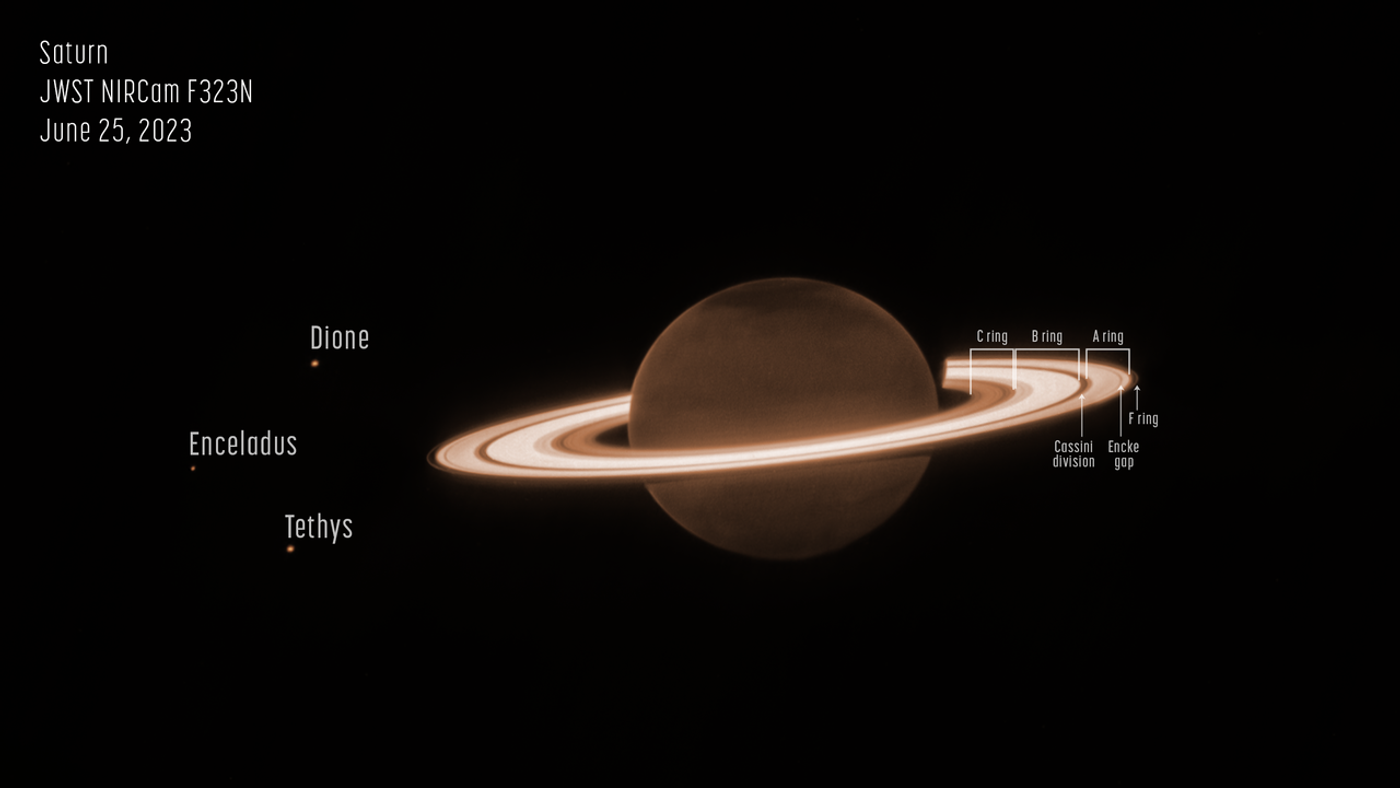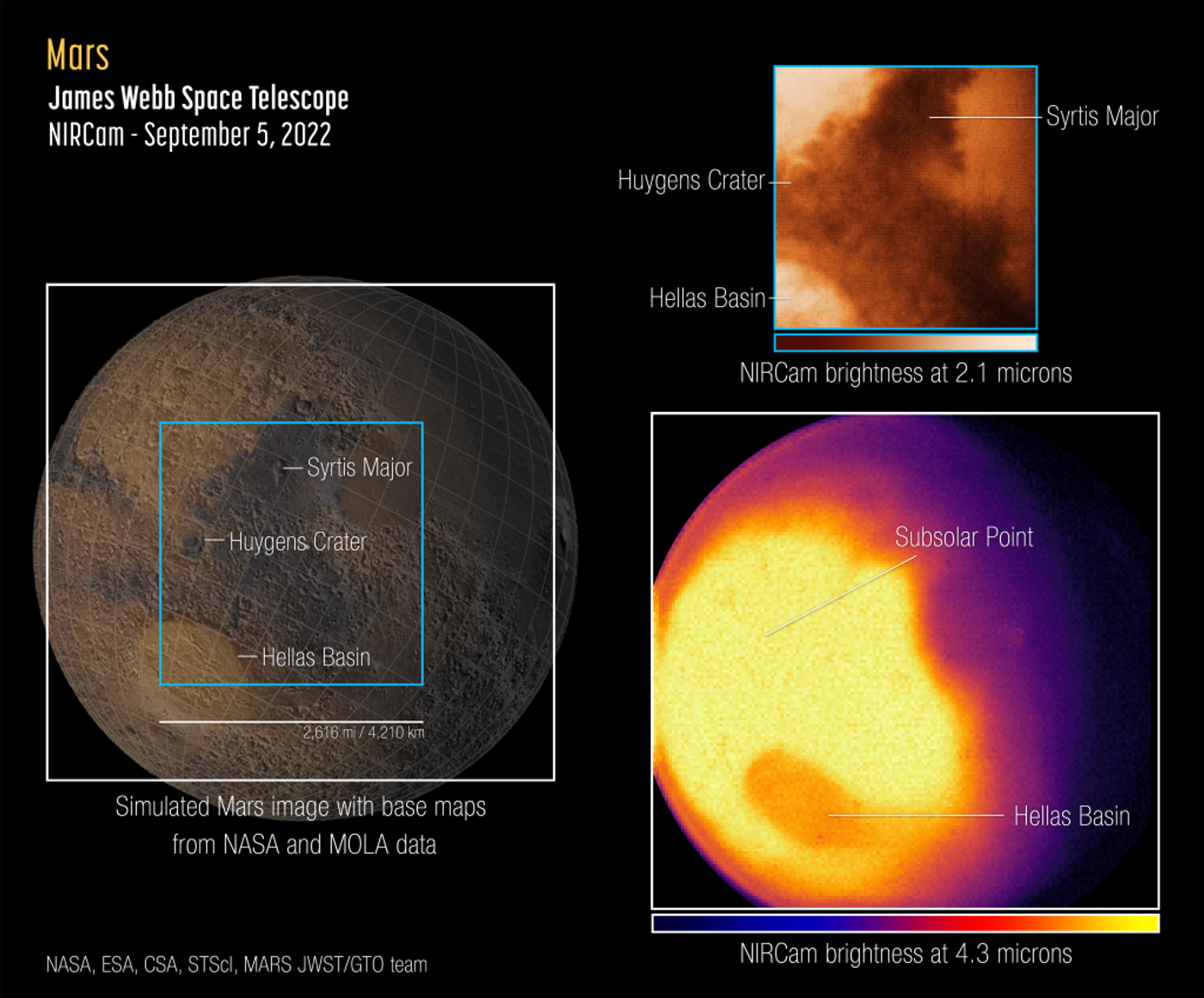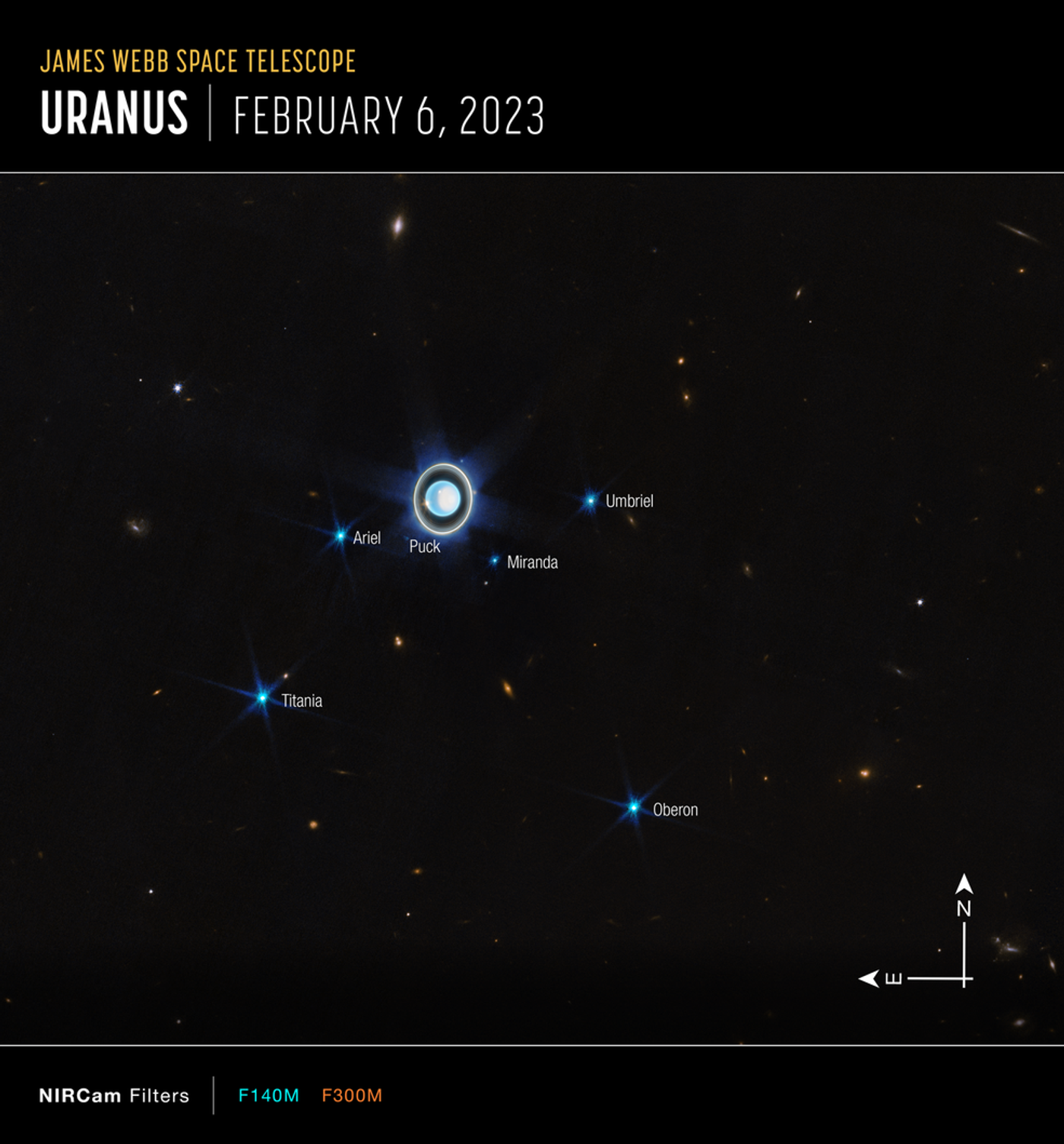Saturn's Rings Glow in Infrared in Latest Webb Images
While NASA’s James Webb Space Telescope (JWST) is primarily known for capturing breathtaking infrared images of the universe using its NIRCam Instrument, it has been known to examine the planets of our solar system from time to time, as demonstrated in a most recent series of images of Saturn, which hold the potential to offer new insights into the second largest planet in the solar system, its rings, and even its moons.
Infrared image of Saturn and three of its moons taken on June 25, 2023 by the James Webb Space Telescope’s NIRCam instrument. (Credit: Credits: NASA, ESA, CSA, STScI, M. Tiscareno (SETI Institute), M. Hedman (University of Idaho), M. El Moutamid (Cornell University), M. Showalter (SETI Institute), L. Fletcher (University of Leicester), H. Hammel (AURA); image processing by J. DePasquale (STScI))
As noted, these images of Saturn were taken in infrared, as JWST wasn’t designed to capture light in visible wavelengths, but this has allowed JWST to image Saturn like never before, showing bright rings encircling a much darker, and cooler, Saturn, along with three of its 124 moons: Dione, Enceladus, and Tethys. The ring details include the A Ring, B Ring, C Ring, F Ring, Encke Gap, and the dark Cassini Division.
“We are very pleased to see JWST produce this beautiful image, which is confirmation that our deeper scientific data also turned out well,” said Dr. Matthew Tiscareno, who is a SETI Institute senior research scientist and was the lead architect behind this observation. “We look forward to digging into the deep exposures to see what discoveries may await.”
While the much fainter G and F rings are not visible in these images, scientists will still be able to study these objects, nonetheless. They will also be able to examine the seasonal changes on Saturn, as the both the north and south polar regions of Saturn appear darker in these images, but scientists note the north pole is darker than normal despite it presently being summertime in the northern hemisphere of the ringed planet. It is currently unknown what’s causing this unusual darkness in the north polar regions, but the speculation is the seasonal processes could be affecting aerosols present in that location of the planet.
While only three of the known 124 moons are visible in this image, scientists hypothesize they could be able to observe the much smaller and fainter moons of Saturn in future JWST observations, which could help paint a clearer picture of the Saturnian system, as well as its formation and evolution history. These images come after NASA released raw images of Saturn taken by JWST, which can be seen below.
While this marks the first time JWST has imaged Saturn, this is not the first time it has imaged one of the moons visible in this most recent image, as JWST recently captured images of large water plumes being discharged from the south pole of the icy moon, which continues to provide evidence that it possesses a liquid water ocean beneath its cy crust.
Along with Saturn, JWST also used its NIRCam Instrument to capture breathtaking images of Mars, Jupiter, and Uranus, revealing exquisite, never-before-seen details of each of these mysterious worlds. For Mars, JWST revealed temperatures variances between latitudes, along with a darkened Hellas Basin caused by atmospheric effects. For Jupiter, JWST captured the giant planet’s cloud layers in incredible detail, its northern and southern auroras, two of Jupiter’s smaller and fainter moons, its faint ring system, and even the aurora’s diffraction, as well. For Uranus, JWST captured intricate details of the rings of the solar system’s only sideways-rotating planet, along with several of its moons.
Webb’s first images of Mars, captured by its NIRCam instrument Sept. 5, 2022 [Guaranteed Time Observation Program 1415]. Left: Reference map of the observed hemisphere of Mars from NASA and the Mars Orbiter Laser Altimeter (MOLA). Top right: NIRCam image showing 2.1-micron (F212 filter) reflected sunlight, revealing surface features such as craters and dust layers. Bottom right: Simultaneous NIRCam image showing ~4.3-micron (F430M filter) emitted light that reveals temperature differences with latitude and time of day, as well as darkening of the Hellas Basin caused by atmospheric effects. The bright yellow area is just at the saturation limit of the detector. Credit: NASA, ESA, CSA, STScI, Mars JWST/GTO team
Composite image of the Jupiter system from Webb’s NIRCam using two filters – F212N (orange) and F335M (cyan). (Credit: NASA, ESA, CSA, Jupiter ERS Team; image processing by Ricardo Hueso (UPV/EHU) and Judy Schmidt)
Image of the Uranian system captured with Webb’s NIRCam instrument featuring the planet Uranus as well as six of its 27 known moons (most of which are too small and faint to be seen here). Additionally, there are a few background objects, including many galaxies. (Credit: NASA, ESA, CSA, STScI. Image processing: J. DePasquale (STScI))
What new discoveries will JWST make about Saturn, its rings, and moons in the coming years and decades? Only time will tell, and this is why we science!
Sources: NASA, SETI Institute, NASA, NASA (1), Wikipedia, EurekAlert!, NASA (2), Sky & Telescope, NASA (3), NASA (4), NASA (5), NASA (6)
As always, keep doing science & keep looking up!












